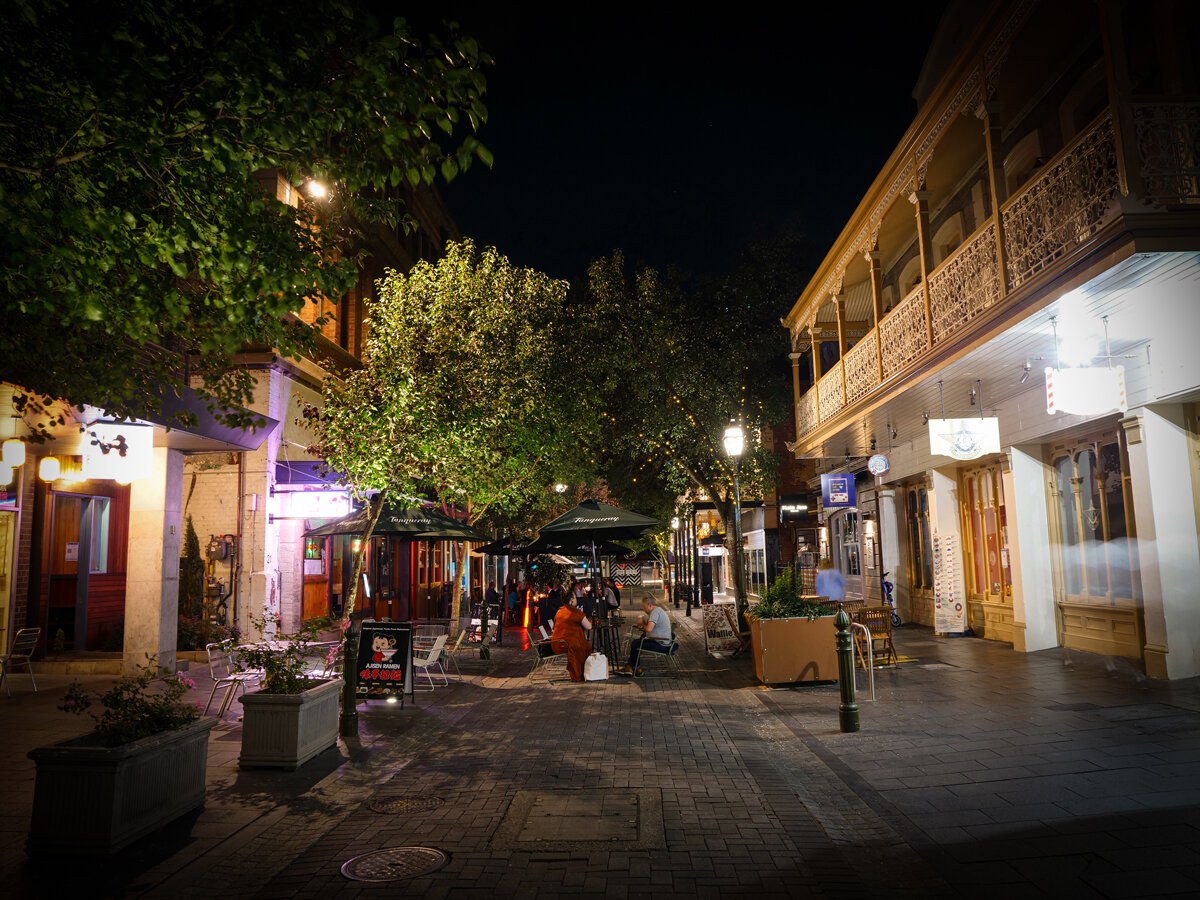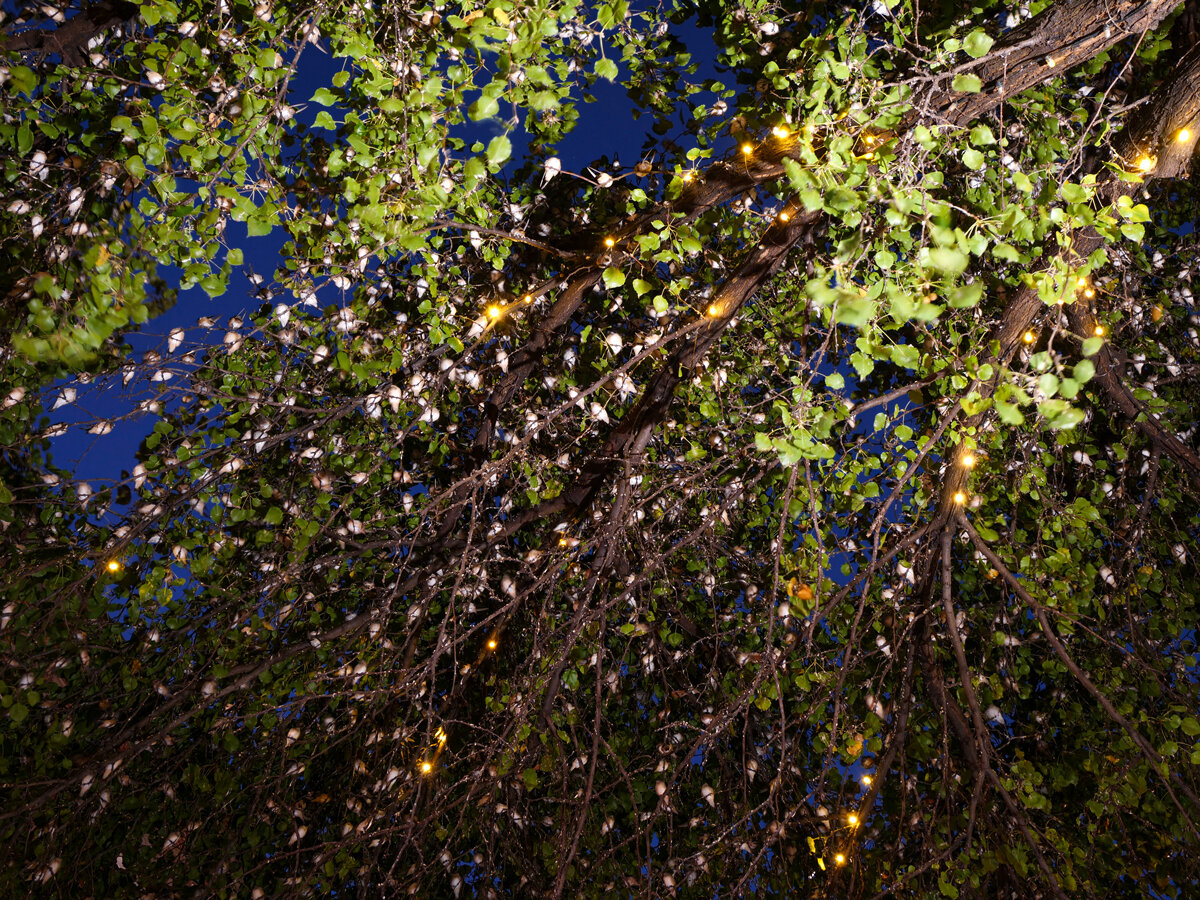Leigh Street's cafe and bar strip pulls the crowds in the CBD, but did you know that as many as 10,000 tree martins also flock to this popular spot? Find out more about these little native birds.

Tree martins roosting in a tree at night on Leigh Street in Adelaide city.
Every evening between January and May, as many as 10,000 tiny birds descend on Leigh Street in Adelaide city to bed down in the street trees for the night. It’s a strategic arrival, and quite an incredible sight at sunset.
Just before dark, a swirling flock gathers overhead before plummeting down in a coordinated rush.
The birds initially stay high to avoid the city's resident falcons looking for dinner, then they dart down fast to get through the danger zone as quickly as possible, working on the theory of safety in numbers.
Here's everything you need to know about these birds flocking to Leigh Street:
What species are the Leigh Street birds?
The native birds are tree martins which are widespread across South Australia.
Tree martins are a type of swallow bird. They are a declining species in the Mount Lofty and Adelaide area.
So, to have this many in the heart of the city is an unexpected bonus from a conservation perspective. And a great spectacle for bird lovers and passers-by.
Tree martins’ natural nest sites are hollows in horizontal branches of gum trees and steep creek banks, but across Adelaide many now resort to the hollow steel cross-arms of stobie poles and vent holes in older buildings.

Leigh Street in Adelaide lined with Callery pear trees.
Why are tree martins arriving in big numbers to a city street?
We think it’s because the birds have worked out that trees in the city are safe havens.
The noise, light and people can help deter their predators like birds of prey such as peregrine and Australian hobby falcons. You’ll find them watching from vantage points on nearby buildings, or speeding through the sky to swipe a tree martin at dusk.
Rainbow lorikeets and musk lorikeets have their favourite city trees to congregate in, and tree martins do too – but we really hadn’t noticed this until they took a liking to Leigh Street's exotic trees.
The exotic trees are Callery pear trees (Pyrus calleryana), which have been planted as street trees across much of Adelaide. They originally hail from China and Vietnam.
There are no set rules for trying to protect our biodiversity. The Callery pear is an exotic species that ticks all the boxes for a great place to sleep. When asleep in the trees, the birds look very similar to the leaves on the tree, so maybe there is some camouflage benefit too.

Thousands of tree martins in one tree on Leigh Street in Adelaide city.
How long have the tree martins been visiting Leigh Street?
The tree martins have been visiting Leigh Street for nearly 10 years during the warmer months, suggesting they’re not going to stop any time soon.
In fact, the roosting colony has grown so significantly that it occasionally overflows into other trees in nearby streets.
The 10,000 native tree martins roosting in Leigh Street during Adelaide's summer is the largest roost of this species anywhere in Australia.
How long do the tree martins roost on Leigh Street for?
As Adelaide's temperatures drop in around May each year, the bulk of the birds depart for warmer places, and head north with some venturing as far as New Guinea and Indonesia.
Enjoy you next coffee or wine on Leigh Street this summer with the tree martins wildlife theatre!
Keep in-the-know about Adelaide's environment
Subscribe to our monthly newsletter for the latest on Adelaide's environment straight to you inbox, or browse our website's discover section to learn more about our city's plants and animals.
This story was originally published in April 2021, and has been updated.